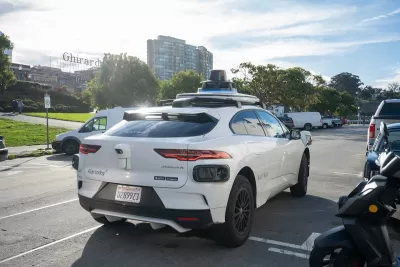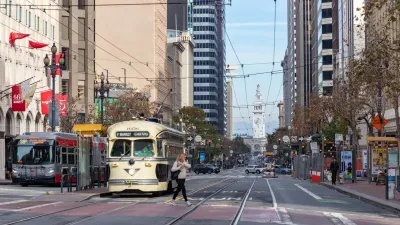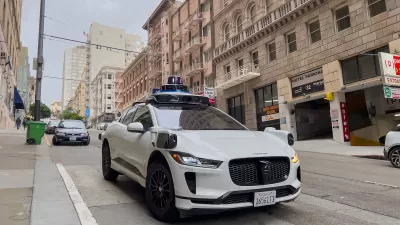Multiple sites slated for housing development are now being turned into charging and storage lots for autonomous vehicles, making housing an unintended victim of the robotaxi revolution.

The growth of autonomous taxis could be contributing to San Francisco’s housing crisis, according to an article by J.K. Dineen in the San Francisco Chronicle.
“From Jackson Square to the Mission to SoMa, some San Francisco property owners are trading in risky, but potentially lucrative, housing developments for the relatively easy money offered by the autonomous vehicle industry’s growing need for fleet charging lots.” Now, hundreds of proposed housing units are being nixed in favor of robotaxi charging lots.
Dineen points out that charging stations are themselves expensive and require a Planning Commission hearing. “For developers looking to make long-term income from AV fleet charging, that level of investment could be worthwhile. But it’s probably not attractive as a temporary use while a builder is waiting for interest rates and construction costs to come down to the level where housing works.” However, in a city where housing development can already be prohibitively expensive, AV charging lots, operated by multi-billion-dollar companies with deep pockets, could become a major competitor for urban real estate.
FULL STORY: Could robotaxis be yet another reason for S.F.’s lack of new housing?

Trump Administration Could Effectively End Housing Voucher Program
Federal officials are eyeing major cuts to the Section 8 program that helps millions of low-income households pay rent.

Planetizen Federal Action Tracker
A weekly monitor of how Trump’s orders and actions are impacting planners and planning in America.

The 120 Year Old Tiny Home Villages That Sheltered San Francisco’s Earthquake Refugees
More than a century ago, San Francisco mobilized to house thousands of residents displaced by the 1906 earthquake. Could their strategy offer a model for the present?

HSR Reaches Key Settlement in Northern California City
The state’s high-speed rail authority reached an agreement with Millbrae, a key city on the train’s proposed route to San Francisco.

Washington State Legislature Passes Parking Reform Bill
A bill that would limit parking requirements for new developments is headed to the governor’s desk.

Missouri Law Would Ban Protections for Housing Voucher Users
A state law seeks to overturn source-of-income discrimination bans passed by several Missouri cities.
Urban Design for Planners 1: Software Tools
This six-course series explores essential urban design concepts using open source software and equips planners with the tools they need to participate fully in the urban design process.
Planning for Universal Design
Learn the tools for implementing Universal Design in planning regulations.
Ada County Highway District
Clanton & Associates, Inc.
Jessamine County Fiscal Court
Institute for Housing and Urban Development Studies (IHS)
City of Grandview
Harvard GSD Executive Education
Toledo-Lucas County Plan Commissions
Salt Lake City
NYU Wagner Graduate School of Public Service





























